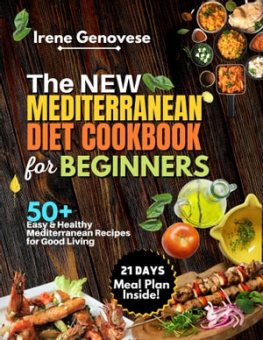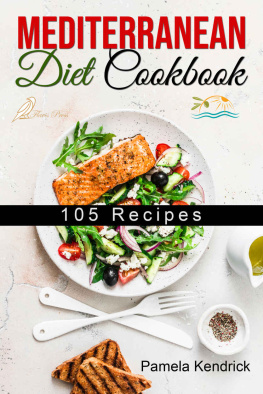INTRODUCTION
A Mediterranean diet has been initially developed in Greece and Southern Italy. Typical components of the Mediterranean diet are fruits, vegetables, whole grains, beans, nuts, and seeds such as olive or canola oil. Whole grains are also a healthy part of any well-balanced diet.
The objective behind this type of diet is to lower your heart disease risk and help you maintain health during aging; its also known for being low in saturated fats. The Mediterranean diet is one of the best eating habits because of its high nutritional value and low-calorie consumption.
The Mediterranean diet is full of never-ending varieties of healthy, fresh, and delicious foods. However, there is more of an emphasis on certain types of foods; nothing is excluded. Therefore, people who try a Mediterranean diet can enjoy the dishes they love while also learning to appreciate how good the freshest, healthiest foods can be.
Transitioning into the Mediterranean diet is mainly about bracing yourself for a new way of eating, adapting your attitude toward food into one of joyful expectation and appreciation of good meals and good company. Its like a mindset like anything else, so youll want to make your environment unite so you can quickly adapt to the lifestyle in the Mediterranean way.
The Scientific Reviews about Mediterranean Diet Is Impressive
The studies suggest that the Mediterranean diet may be one of the healthiest diets for a long and healthy life.The American Journal of Clinical Nutrition.
For centuries, the Mediterranean diet has been hailed by doctors and nutritionists as among the healthiest in the world. Here are 6 reasons why:
Its high in plant food and low on animal products . This Mediterranean diet is rich in plant-based foods, including salads, fruits, nuts, and beans. Its also low in meat and dairy products. So what foods are high in plant protein? Good ones include dark green vegetables like spinach and kale, Plum and prunes, Lentils, Walnuts, Nuts (almonds, pistachios, walnuts), and cheese (cows milk cheese is best). Another point to remember: A diet high in protein can interfere with calcium absorption.
Its based on a lot of olive oil. Some think the Mediterranean diet is all butter and oil, but its not. Olive oil is high in monounsaturated fat, which has been proven to reduce blood pressure and LDL cholesterol and increase HDL cholesterol.
Its high in fiber. Fiber can help lower blood pressure, and according to a study from the University of Maryland Medical Center, fiber can also help protect against some cancersespecially colon cancer.
Its rich in antioxidants. This Mediterranean diet is rich in antioxidants, which can help your immune system fight off diseases and fight cancer.
Its got more omega-3s than any diet before it . Research has shown that omega-3 fatty acidsparticularly alpha-linoleic acid (found in flaxseed oil)are crucial to good health and may help prevent or treat heart disease, certain cancers, arthritis, obesity, and other ailments that are associated with inflammation.
It helps prevent obesity. One recent study followed almost 15,000 people from 9 countries over 4 years and found that those who ate Mediterranean style were less likely to become obese than other diets.
The Mediterranean diet is generally high in fruits, vegetables, and fish but low in red meat and dairy products. It can be adapted to any diet: vegan, vegetarian, pescetarian (eating fish), or anyone who just wants to improve their eating habits.
History and Origins of the Diet
The first observational study that led to elaborating the concept of the Mediterranean diet and understanding its benefits, which became famous as the 7 Countries Study , was conducted by the American biologist and physiologist Ancel Keys in the 1940s.
Keys, who was in Crete at the time following allied troops, noted that the incidence of cardiovascular disease on the island was much lower than in the United States. After several years, in 1944, in Paestum, he made the same observation about the population of Cilento and guessed that the low incidence of heart disease could be related to diet.
He moved to Pioppi, a village of Cilento, where he could better observe the diet of the local people: he noticed farmers of the small towns of Southern Italy had a diet poor in fats of animal origin and mainly made of bread and pasta or soups, often consumed with legumes, seasonal fruits and vegetables of their gardens, extra-virgin olive oil, cheese, dried fruits, and wine. Habits that, both for the peasants of Cilento and the inhabitants of Crete Island, resulted in higher longevity and a lower incidence of cardiovascular diseases than the ones observed in the citizens of Northern Europe and the United States of America.
In the 1950s, people started to move away from the prairie-style diet of meat and potatoes popular for centuries. This new cuisine, which became known as the Mediterranean diet or Mediterranean way of eating, was initially seen in Italy (particularly among Italians living in villages near Naples).
A typical Mediterranean diet includes many fruits, vegetables, whole grains, olive oil, and fish but very little sugar. Seafood is common, but red meat isnt a staple of these menus. Wine can be consumed, but its usually consumed with meals rather than by itself because Mediterranean cultures see alcohol as part of a healthy lifestyle instead of abuse. Therefore, red wine is typically consumed with meals or during the main course of the meal. Beer and spirits are almost unheard of. Snacks are also eaten at this time; these may include nuts but often have more prepackaged foods like a bread roll with olive oil or smaller portions that can be eaten for the day, like boiled eggs and vegetables.
Foods from both the Mediterranean region and Italy were featured as part of the Eat More Color campaign in 1985 to inform people about the importance of fruits and vegetables.
The Mediterranean diet is based on a healthy balance of fat from olive oil, fish, nuts, and other plant sources. In addition, there is high consumption of legumes and omega-3 fatty acids. This diet may also benefit heart health as people commonly have low levels of bad cholesterol (LDL). The Mediterranean diet isnt just about the food thats eaten but also about an overall lifestyle. The social aspect is considered very important, with regular family meals and gatherings around big tables being common. People dont tend to snack between meals or eat processed foods very often since it has been grasped that this is not part of traditional eating in these areas.
There is an accurate weight of evidence that demonstrates the health benefits of Mediterranean eating. For example, it has been shown that the Mediterranean diet can have positive effects on cholesterol. Eating a Mediterranean diet can significantly lower LDL (bad) cholesterol and triglycerides and raise HDL (good) cholesterol associated with a reduced risk of developing heart disease.
More than 10,000 recipes for Mediterranean dishes, most of which date from before the 17th century. The best known are those from Tuscany, Lazio, Sicily, and Sardinia. Other regions include Calabria, Abruzzo, Emilia-Romagna, and Friuli-Venezia Giulia. These dishes are simple and rustic but generally very flavorful. There is usually plenty of olive oil, fresh herbs, and tomatoes. Meat is not typically eaten in these regions. But the typical Mediterranean diet does include fish or seafood twice per week as part of a healthful diet.
The traditional cuisine of Southern Italy is reflected in its wines, with wines made from the Tuscany grape and many protected names on the wine label, such as Chianti Classico and Brunello di Montalcino.






